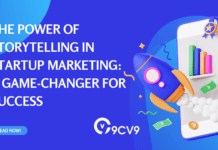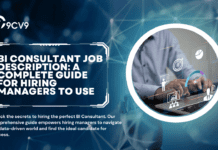Key Takeaways
- Conversation intelligence software uses AI to transcribe and analyze calls, revealing insights that boost sales, support, and productivity.
- It enables real-time coaching, customer sentiment tracking, and data-driven decision-making across departments.
- Businesses across industries leverage it to improve communication strategies, ensure compliance, and enhance customer experiences.
In today’s highly competitive digital economy, businesses are constantly seeking smarter ways to understand, engage, and retain their customers. One of the most transformative innovations driving this evolution is conversation intelligence software. Fueled by advances in artificial intelligence (AI), machine learning (ML), and natural language processing (NLP), conversation intelligence is redefining how organizations capture value from everyday business conversations—whether they occur during a sales call, customer service interaction, or internal team meeting.

At its core, conversation intelligence software is a sophisticated solution that analyzes spoken or written interactions in real time or after a conversation concludes. It automatically records, transcribes, and interprets these communications to uncover actionable insights, track engagement patterns, and evaluate the effectiveness of interactions. This enables businesses to move beyond basic call recording and manual note-taking, leveraging data-driven intelligence to improve performance, increase conversions, and foster stronger customer relationships.
The rise of remote work, digital-first customer engagement, and hybrid communication tools like Zoom, Microsoft Teams, and VoIP platforms has only accelerated the adoption of conversation intelligence. From sales teams looking to improve close rates to support agents needing deeper customer insights, this technology is fast becoming an essential part of the modern business toolkit.
Unlike traditional call analytics software, conversation intelligence doesn’t just count calls or measure talk time—it deeply understands what’s being said. It can detect customer sentiment, highlight critical topics discussed, identify moments of tension or interest, and even flag missed opportunities during conversations. By converting unstructured voice data into structured, actionable intelligence, organizations can not only optimize their sales and support strategies but also drive continuous improvement through targeted training and performance feedback.
Moreover, conversation intelligence software integrates seamlessly with customer relationship management (CRM) platforms, sales enablement tools, and enterprise resource planning (ERP) systems. This ensures that insights derived from conversations are connected across departments, enabling cross-functional teams to act swiftly on real-time data and drive more informed decision-making.
In this blog, we will explore the full scope of what conversation intelligence software entails—from its key features and technical functionality to its wide-ranging benefits and real-world use cases. We’ll also look at how it works under the hood, what differentiates the leading tools in the market, and how businesses can effectively implement it to gain a competitive edge. Whether you’re a sales leader, a customer experience strategist, or an operations executive, understanding the role and impact of conversation intelligence software is crucial to staying ahead in a data-driven, customer-centric marketplace.
Before we venture further into this article, we would like to share who we are and what we do.
About 9cv9
9cv9 is a business tech startup based in Singapore and Asia, with a strong presence all over the world.
With over nine years of startup and business experience, and being highly involved in connecting with thousands of companies and startups, the 9cv9 team has listed some important learning points in this overview of What is Conversation Intelligence Software and How It Works.
If your company needs recruitment and headhunting services to hire top-quality employees, you can use 9cv9 headhunting and recruitment services to hire top talents and candidates. Find out more here, or send over an email to [email protected].
Or just post 1 free job posting here at 9cv9 Hiring Portal in under 10 minutes.
What is Conversation Intelligence Software and How It Works
- What is Conversation Intelligence Software?
- Core Features of Conversation Intelligence Software
- How Conversation Intelligence Software Works
- Benefits of Using Conversation Intelligence Software
- Use Cases Across Industries
- How to Choose the Right Conversation Intelligence Software
- Future Trends in Conversation Intelligence
1. What is Conversation Intelligence Software?
Conversation intelligence software is a powerful, AI-driven tool that transforms raw voice and text communications into actionable insights. By analyzing conversations in real-time or post-interaction, it enables businesses to understand customer behavior, optimize sales performance, and enhance decision-making through advanced speech recognition, natural language processing (NLP), and machine learning (ML) technologies.
Definition and Core Purpose
- Conversation intelligence software captures and analyzes sales, support, and customer engagement conversations.
- It uncovers hidden insights, identifies trends, and automates note-taking and tagging.
- The software is used across departments such as sales, customer support, marketing, and product development.
Primary Goals:
- Improve communication effectiveness
- Identify revenue-driving conversations
- Train teams based on real interaction data
- Ensure compliance and performance tracking
How It Differs from Traditional Call Analytics
| Feature | Traditional Call Analytics | Conversation Intelligence Software |
|---|---|---|
| Data Captured | Call metadata (duration, time, etc.) | Full call transcription & analysis |
| Insights Offered | Basic reports | Deep sentiment, keyword, & topic analysis |
| AI/NLP Usage | Minimal | Extensive use of AI and NLP |
| Use Case Focus | Call volume tracking | Performance coaching, deal intelligence |
| Automation Capabilities | Limited | Automated note-taking, CRM updates |
Key Capabilities of Conversation Intelligence Software
AI-Powered Transcription and Analysis
- Automatically transcribes voice and video conversations
- Supports multiple languages and dialects
- Detects filler words, silence, interruptions, and more
- Examples: Gong and Chorus provide real-time transcription synced with CRM
Sentiment and Intent Detection
- Analyzes tone, emotions, and customer sentiment
- Highlights areas of frustration or satisfaction
- Identifies urgency and buying intent based on linguistic cues
Keyword and Topic Tracking
- Tracks specific keywords and product mentions
- Categorizes conversations by themes (e.g., pricing, objections, competitor names)
- Useful for marketing teams to refine messaging based on customer language
Call Scoring and Quality Assessment
- Scores calls automatically based on key behaviors
- Assesses talk-to-listen ratio, objection handling, and closing signals
- Helps managers identify high-performing reps and coaching opportunities
Integration with CRM and Communication Tools
- Syncs with platforms like Salesforce, HubSpot, Microsoft Teams, Zoom, and Slack
- Auto-logs activities and updates customer records in real-time
- Ensures sales and support teams stay aligned with up-to-date context
Real-World Examples of Use
| Company Name | Use Case Description | Outcome Achieved |
|---|---|---|
| Gong | Used by B2B sales teams to improve deal forecasting and coach reps | 27% increase in win rates through coaching |
| Chorus.ai | Employed by customer support teams to improve issue resolution and consistency | Reduced average handle time by 20% |
| Avoma | Adopted by startups for meeting intelligence and note automation | Saved 15+ hours per rep per week |
| Salesloft | Used for tracking talk patterns and objection handling in sales conversations | Improved quota attainment by 32% |
Industries Benefiting from Conversation Intelligence Software
- Sales and Revenue Teams
- Understand what top performers do differently
- Improve pipeline accuracy and forecasting
- Customer Support
- Detect root causes of recurring issues
- Increase customer satisfaction through faster resolutions
- Marketing Teams
- Discover language used by prospects and customers
- Build more relevant content and messaging
- Product Management
- Collect direct feedback from users
- Prioritize features and enhancements
- Human Resources
- Monitor candidate communication in interviews
- Identify red flags in real-time
Infographic: Conversation Intelligence Workflow
[Conversation Begins]
↓
[Voice/Text Captured in Real-Time]
↓
[AI Transcription Engine Converts to Text]
↓
[NLP Analyzes Keywords, Sentiment, Topics]
↓
[Insights Delivered via Dashboards/CRM]
↓
[Managers Coach, Reps Optimize, Teams Align]
Common Terminology in Conversation Intelligence
| Term | Definition |
|---|---|
| Talk Ratio | Ratio of speaker talk time vs. listener talk time |
| Sentiment Analysis | Evaluates emotional tone of conversation |
| Objection Handling | How reps respond to concerns or hesitations |
| Deal Intelligence | Insights related to deal progression, stalling, or risk |
| Playbook Compliance | Degree to which reps follow recommended sales script or process |
Conversation intelligence software represents the convergence of speech analytics, artificial intelligence, and performance coaching into a single, powerful solution. By capturing the voice of the customer and turning it into meaningful data, it allows businesses to become more customer-centric, efficient, and agile—driving measurable outcomes across the entire organization.
2. Core Features of Conversation Intelligence Software
Conversation intelligence software is designed to go beyond simple call recording and transcription by leveraging artificial intelligence to provide real-time and post-conversation insights. These tools capture, analyze, and interpret communication data across sales, support, and customer service conversations. The following core features are what make conversation intelligence software a powerful asset for modern businesses.
1. Real-Time and Post-Call Transcription
- Converts live conversations into accurate, searchable text using AI and NLP
- Supports multiple languages and accents for global business needs
- Tags speakers automatically for multichannel clarity (e.g., sales rep vs. customer)
- Enables quick review of conversations for compliance and coaching
Example:
Gong uses advanced speech recognition to generate word-by-word transcripts during live sales calls, which are then stored in its searchable database.
2. Sentiment Analysis and Emotional Intelligence
- Detects emotions such as satisfaction, frustration, or confusion using vocal tone and phrasing
- Evaluates customer intent, urgency, and potential churn risk
- Highlights red-flag moments in conversations to assist in coaching or escalation
- Visual indicators show emotional flow throughout the call timeline
Example:
Chorus.ai applies emotional intelligence algorithms to detect shifts in customer sentiment and provides sentiment heatmaps across conversations.
3. Keyword and Topic Tracking
- Identifies frequently mentioned terms, objections, or competitor references
- Automatically categorizes topics (e.g., pricing, product feedback, technical concerns)
- Tracks mentions of brand-specific keywords across all interactions
- Supports customizable keyword monitoring by teams or departments
| Example Keywords Tracked | Context |
|---|---|
| “Pricing” | Signals negotiation or budget concern |
| “Competitor X” | Reveals threat landscape or market shifts |
| “Not satisfied” | Indicates potential dissatisfaction |
| “Integration” | Highlights product feature requirements |
Example:
Avoma allows users to define custom keyword libraries and alerts sales managers when these terms appear frequently across customer meetings.
4. Call Scoring and Rep Performance Analytics
- Automatically scores calls based on custom or AI-defined criteria
- Assesses talk-to-listen ratio, question-asking frequency, and objection handling
- Benchmarks performance across reps, teams, or regions
- Facilitates coaching opportunities based on quantitative insights
| Performance Metric | Optimal Range | Why It Matters |
|---|---|---|
| Talk-to-Listen Ratio | 40%–60% talk time | Encourages active listening |
| Number of Open-Ended Questions | 7–10 per call | Drives deeper customer engagement |
| Interruption Count | <5 per call | Measures professionalism and patience |
Example:
Salesloft’s conversation intelligence module provides automated call scores and performance dashboards to help leaders identify top reps and coaching gaps.
5. Actionable Conversation Insights and Coaching Suggestions
- Summarizes critical points from each call automatically
- Recommends next steps, follow-ups, and coaching materials
- Identifies missed opportunities or unaddressed customer concerns
- Delivers performance tips based on historical data and rep behavior
Example:
Revenue.io offers AI-generated insights that notify sales managers if a rep fails to mention a key product benefit or skips a discovery question during a pitch.
6. Seamless CRM and Business Tool Integrations
- Integrates with platforms like Salesforce, HubSpot, Zoho CRM, Microsoft Teams, Slack, Zoom, and Google Meet
- Syncs transcripts, summaries, call recordings, and sentiment data directly into CRM profiles
- Automates workflow tasks such as lead scoring, follow-up reminders, and opportunity tagging
- Reduces manual data entry and ensures real-time context for all teams
| Integration Type | Tools Supported | Benefit to Users |
|---|---|---|
| CRM Integration | Salesforce, HubSpot, Zoho | Centralized customer data management |
| Video Conferencing | Zoom, Google Meet, MS Teams | Conversation intelligence for meetings |
| Messaging Platforms | Slack, Microsoft Teams | Quick sharing of insights and summaries |
Example:
Gong integrates with Salesforce to auto-populate opportunity records with call outcomes, sentiment scores, and follow-up recommendations.
7. Deal and Pipeline Intelligence
- Tracks deal progression based on customer conversation patterns
- Flags at-risk deals due to lack of engagement, negative sentiment, or unanswered objections
- Aggregates conversation data across deals for forecasting accuracy
- Identifies which reps, messages, or strategies contribute most to closed-won outcomes
Example:
Clari’s conversation intelligence features combine sales activity data with deal insights to enhance pipeline visibility and improve forecast reliability.
8. Compliance Monitoring and Security Features
- Flags compliance breaches in real-time (e.g., failure to mention terms & conditions)
- Ensures data protection through encryption, secure storage, and audit trails
- Supports regulatory frameworks like GDPR, HIPAA, SOC 2, and CCPA
- Allows for permission-based access and automatic data redaction
| Compliance Element | Feature Provided |
|---|---|
| Data Encryption | End-to-end encryption for call storage |
| Audit Logs | Detailed logs of user access and changes |
| Consent Monitoring | Ensures appropriate call recording permissions |
| Auto-Redaction | Hides sensitive PII or financial information |
Example:
Wingman offers automatic compliance alerts during live calls and redacts sensitive data from transcripts to maintain regulatory alignment.
9. Customizable Dashboards and Reporting
- Provides visual dashboards with charts, graphs, and KPI tracking
- Offers team-based, individual, and enterprise-level reporting views
- Supports filters based on date, rep, sentiment, keyword, and call duration
- Enables export of reports for executive presentations or quarterly reviews
Chart Example: Keyword Frequency vs. Sales Conversion Rate
| Keyword Mentioned | Frequency in Calls | Avg. Conversion Rate |
|-------------------|--------------------|-----------------------|
| "Discount" | 62% | 31% |
| "Trial period" | 48% | 38% |
| "Integration" | 34% | 44% |
| "Support" | 27% | 29% |
Example:
ExecVision provides customizable dashboards where managers can view call stats, keyword frequency, and rep performance in a unified visual report.
Conversation intelligence software offers a feature-rich ecosystem that supports businesses in making more informed decisions, driving consistent team performance, and delivering exceptional customer experiences. Whether used to improve sales closing rates or ensure regulatory compliance, these core features enable organizations to scale communication strategies backed by real-time data and intelligent automation.
3. How Conversation Intelligence Software Works
Conversation intelligence software is built on a combination of AI-driven technologies such as speech recognition, natural language processing (NLP), machine learning (ML), and data analytics. These systems are designed to process and interpret spoken or written human communication to derive actionable insights, automate workflows, and enhance decision-making.
Below is a detailed breakdown of how this software works—from data capture to delivering business insights.
1. Capturing Conversations Across Multiple Channels
- The first step involves capturing audio or video data from various sources.
- Integrates with tools like Zoom, Microsoft Teams, Google Meet, VoIP phones, and call center systems.
- Supports omnichannel input: live calls, recorded meetings, video conferences, chats, and emails.
Input Sources Include:
- Sales calls over VoIP (e.g., RingCentral, Aircall)
- Video meetings on Zoom or Google Meet
- Live chats and messaging apps like Slack
- Customer support conversations via helpdesk software
Example:
Gong connects directly with Zoom and VoIP systems to automatically capture every customer-facing conversation without manual recording.
2. Real-Time Speech Recognition and Transcription
- Uses automatic speech recognition (ASR) to convert voice to text instantly.
- Applies speaker diarization to differentiate between participants.
- Recognizes language, accents, industry terms, and filler words for accuracy.
Technology Stack:
- ASR Engines: Google Speech-to-Text, Amazon Transcribe, Microsoft Azure Speech
- Speaker Identification: Labels speakers and timestamps every sentence
- Vocabulary Training: Learns product-specific terms over time
| Feature | Purpose |
|---|---|
| Real-time transcription | Immediate visibility into live conversations |
| Multi-language support | Enables use in global, multilingual environments |
| Diarization | Identifies who said what during the call |
Example:
Avoma provides AI-generated transcripts with time-stamped speaker labels, allowing users to search and highlight key moments in conversations.
3. Natural Language Processing (NLP) and Text Analysis
- NLP algorithms analyze the transcribed content to understand semantics and context.
- Extracts key entities like names, dates, pricing, and product mentions.
- Identifies intent, sentiment, emotion, and conversation themes.
- Categorizes conversation topics automatically (e.g., objections, features, pricing).
Core NLP Tasks:
- Sentiment Analysis: Detects positive, neutral, or negative tone
- Intent Recognition: Understands purpose—buying interest, complaint, etc.
- Named Entity Recognition (NER): Extracts important keywords (e.g., locations, competitor names)
| NLP Output | Example Detected Element | Business Use |
|---|---|---|
| Intent | “I’m interested in a demo” | Sales follow-up opportunity |
| Sentiment | “Not really satisfied” | Customer retention flag |
| Objection | “It’s too expensive” | Sales coaching moment |
Example:
Chorus.ai uses NLP to detect emotional cues and identify “positive buying signals,” helping reps prioritize hot leads.
4. Machine Learning (ML) and Pattern Recognition
- ML models learn from historical call data to identify patterns in high-performing conversations.
- Continuously improve through exposure to new conversations.
- Predicts deal outcomes, suggests optimal talk patterns, and flags at-risk interactions.
ML Capabilities:
- Call Scoring Algorithms: Grades calls based on criteria like talk ratio, keyword usage, or engagement
- Performance Prediction: Identifies which behaviors lead to successful outcomes
- Rep Benchmarking: Compares performance across the team using similar scenarios
Example:
Salesloft’s conversation intelligence automatically scores calls and recommends behavior adjustments based on successful sales models.
5. Real-Time Alerts and Live Assistance
- Some tools offer real-time guidance to reps during calls.
- Alerts for missed discovery questions, compliance risks, or opportunities to upsell.
- Suggests next-best-action based on conversation flow.
Live Assistance Features:
- Real-time objection handling scripts
- Compliance alerts for legal disclaimers
- Talk-time notifications (e.g., if a rep talks too much)
Example:
Revenue.io provides dynamic, in-call coaching to help reps respond effectively to customer objections in real time.
6. Data Aggregation and Insights Visualization
- Analyzes thousands of conversations to generate trends, summaries, and performance metrics.
- Presents insights in dashboards with visualizations like graphs, heatmaps, and pie charts.
- Tracks KPIs across individuals, teams, and the entire organization.
| Metric | Purpose |
|---|---|
| Call Duration | Identifies ideal conversation length |
| Sentiment Over Time | Measures customer satisfaction trends |
| Keyword Frequency | Highlights most discussed topics |
| Rep Talk-Time Ratio | Tracks listening vs. talking behavior |
Chart Example: Sentiment Trend Across 6 Months
| Month | Positive (%) | Neutral (%) | Negative (%) |
|------------|--------------|-------------|---------------|
| January | 68% | 22% | 10% |
| February | 70% | 20% | 10% |
| March | 73% | 18% | 9% |
| April | 77% | 15% | 8% |
| May | 75% | 17% | 8% |
| June | 80% | 14% | 6% |
Example:
Wingman offers visual analytics showing trends in competitor mentions and top-performing reps over time.
7. Integration with Business Ecosystems
- Automatically logs insights into CRMs like Salesforce, HubSpot, and Zoho.
- Links meeting notes and transcriptions to deals and accounts.
- Enables cross-functional sharing of conversation insights with marketing, customer success, and product teams.
| Integration Type | Business Application |
|---|---|
| CRM Integration | Syncs deal progress, notes, and alerts |
| Marketing Tools | Tracks product feedback for campaign optimization |
| Support Tools | Flags issues for product or engineering teams |
Example:
Gong pushes summarized insights and call notes directly into Salesforce opportunities, making it easier for sales teams to collaborate and close deals faster.
8. Automated Summarization and Action Items
- Generates concise summaries of conversations
- Extracts action items, follow-ups, and commitments
- Enables teams to stay aligned without replaying entire recordings
Summary Capabilities Include:
- Bullet-point notes after each call
- Assigned follow-up tasks based on promises made
- Email-ready summaries for internal or external sharing
Example:
Avoma auto-generates structured meeting notes categorized into sections like “Next Steps,” “Pain Points,” and “Key Questions Asked.”
Conversation Intelligence Workflow Overview
[Conversation Captured from Zoom/VoIP/Chat]
↓
[AI Transcribes and Labels Speakers]
↓
[NLP Analyzes Tone, Keywords, Sentiment]
↓
[ML Learns Patterns and Predicts Outcomes]
↓
[Insights Delivered to Dashboards and CRMs]
↓
[Managers Coach | Sales Reps Optimize | Teams Align]
Conversation intelligence software functions as a real-time data interpreter, transforming the raw language of human interaction into structured intelligence. By connecting every layer of communication—from transcription to predictive analytics—it empowers businesses to boost performance, reduce manual tasks, and gain deeper understanding of both customers and employees. Whether enhancing a sales strategy or resolving support issues faster, the operational workflow of conversation intelligence software ensures measurable impact across the organization.
4. Benefits of Using Conversation Intelligence Software
Conversation intelligence software delivers transformative value by turning every customer conversation into a goldmine of actionable insights. From improving sales conversion rates to enhancing customer satisfaction, this technology empowers businesses to make smarter decisions, automate coaching, and create a data-driven culture across teams. The following section explores the comprehensive benefits of using conversation intelligence software in a modern business environment.
1. Enhanced Sales Performance and Win Rates
- Analyzes sales calls to identify successful conversation patterns
- Tracks key metrics like objection handling, discovery questions, and pricing discussions
- Helps sales reps replicate the behaviors of top performers
- Reduces guesswork in sales strategy and lead prioritization
Example:
Gong clients have reported up to a 30% increase in close rates after using conversation intelligence to analyze top-performing reps and refine talk tracks.
Chart: Sales Win Rate Before and After Implementation
| Quarter | Without CI (%) | With CI Software (%) |
|----------------|----------------|------------------------|
| Q1 | 21% | 21% |
| Q2 | 22% | 26% |
| Q3 | 23% | 31% |
| Q4 | 24% | 34% |
2. Improved Coaching and Sales Team Enablement
- Offers real-world data for personalized coaching based on actual calls
- Highlights individual strengths and skill gaps using objective metrics
- Automates identification of coachable moments such as pricing objections or missed cues
- Reduces ramp-up time for new hires by providing access to top-performing calls and best practices
Example:
Salesloft uses AI-generated call scores and talk-time analysis to enable continuous rep improvement and reduce onboarding time by 40%.
3. Better Customer Experience and Retention
- Identifies pain points, service gaps, and frustration triggers from real conversations
- Detects negative sentiment early to allow proactive support intervention
- Enables personalized follow-ups based on previous customer interactions
- Increases first-contact resolution by surfacing similar historical issues and resolutions
Example:
Chorus.ai enabled a SaaS support team to reduce average resolution time by 23% by surfacing customer pain points more quickly through sentiment analysis.
Table: Customer Support Improvements With Conversation Intelligence
| Metric | Before CI | After CI |
|---|---|---|
| Average Handle Time (AHT) | 6.5 minutes | 4.9 minutes |
| First Call Resolution Rate | 71% | 83% |
| Customer Satisfaction Score | 7.2 / 10 | 8.6 / 10 |
4. Data-Driven Decision Making Across Departments
- Translates unstructured voice data into structured business intelligence
- Identifies patterns in customer behavior, objections, and trends
- Supports marketing, product, and executive teams with real-time customer feedback
- Enables companies to make decisions backed by verified conversational data
Cross-Department Impact:
- Marketing: Tailor messaging based on actual customer language and competitor mentions
- Product Teams: Prioritize roadmap items based on user feedback from conversations
- Executives: Use call insights to guide strategic investments or GTM initiatives
Example:
Avoma enables marketing teams to identify top-used keywords and customer requests, leading to 22% more effective ad messaging based on customer voice.
5. Increased Productivity and Time Efficiency
- Automates note-taking, call summarization, and action-item extraction
- Frees up reps from manual CRM data entry
- Allows faster onboarding through accessible call libraries and real-time transcription
- Reduces meeting lengths by summarizing discussions and eliminating redundancies
Time Savings Example:
- Avoma users save 10–15 hours per week per rep by automating meeting summaries and call notes.
Table: Weekly Time Saved by Task Automation
| Task | Time Before CI | Time With CI | Time Saved |
|---|---|---|---|
| Manual Note-Taking | 4 hours | 30 minutes | 3.5 hours |
| CRM Updates | 3 hours | 20 minutes | 2.7 hours |
| Internal Knowledge Sharing | 2 hours | 30 minutes | 1.5 hours |
| Total Time Saved | — | — | 7.7 hrs |
6. Consistency in Messaging and Compliance
- Ensures teams follow approved scripts, pricing policies, and legal disclaimers
- Detects deviations from compliance guidelines in real time
- Reduces risk by tracking sensitive data and redacting personally identifiable information (PII)
- Maintains a consistent brand voice across all client-facing conversations
Compliance Use Case Example:
Wingman automatically flags reps who fail to deliver legal disclaimers or misstate product capabilities, helping organizations avoid regulatory breaches.
7. Forecasting Accuracy and Deal Pipeline Visibility
- Tracks deal progression based on actual conversations, not just CRM updates
- Identifies at-risk deals using sentiment, engagement frequency, and key phrase detection
- Predicts revenue outcomes more accurately by aggregating data from multiple interactions
- Flags stalled opportunities and recommends actions to revive them
Forecasting Accuracy Example:
Gong enables sales leaders to improve forecast reliability by 25%, thanks to its AI-powered deal health scoring based on real call data.
Chart: Forecast Accuracy Improvement With Conversation Intelligence
| Forecast Type | Traditional Method (%) | With CI Software (%) |
|-------------------|------------------------|------------------------|
| Deal Closure Rate | 68% | 85% |
| Pipeline Accuracy | 61% | 82% |
8. Competitive Intelligence and Market Insights
- Detects competitor names, feature comparisons, and pricing objections
- Aggregates mentions across all conversations to identify trends
- Supports marketing and product strategy by analyzing how the company is positioned in real-world dialogues
- Helps reps prepare better for competitive battles by studying real objections and counter-arguments
Example:
Chorus.ai flagged a spike in mentions of a new competitor across sales calls, prompting the product team to build a counter-narrative and release FAQ guides, improving win rates against that competitor by 18%.
9. Empowerment of Remote and Hybrid Teams
- Provides visibility into conversations across globally distributed teams
- Enhances collaboration with shared access to call libraries, insights, and dashboards
- Standardizes coaching and performance measurement regardless of location
- Encourages peer learning by allowing reps to review successful calls from colleagues
Example:
Teams using Revenue.io during the shift to remote work were able to maintain consistent rep performance and call quality by leveraging real-time coaching and shared analytics.
10. Scalable Intelligence Across the Organization
- Centralizes conversation data from thousands of interactions across teams
- Provides company-wide visibility into customer needs, sales messaging, and performance gaps
- Enables executive leaders to spot company-wide trends in customer sentiment or objections
- Scales effectively for SMBs and enterprises alike, supporting growth and complexity
Scalability Table: Suitability by Business Size
| Business Type | Benefits of CI Software |
|---|---|
| Startups | Faster ramp-up, automated notes, pitch optimization |
| SMBs | Affordable insights, sales team enablement |
| Mid-market | Process standardization, CRM automation |
| Enterprises | Scalable analytics, global team coordination |
Conversation intelligence software is not just a sales or support tool—it is a strategic asset that unlocks the full potential of communication data. By automating insights, improving performance, and aligning departments with real-world customer intelligence, businesses can operate more efficiently, make smarter decisions, and drive continuous growth in a competitive marketplace.
5. Use Cases Across Industries
Conversation intelligence software offers versatile applications that extend far beyond just sales enablement. From healthcare to legal services, and from marketing to financial advisory, this technology delivers actionable insights that improve operational efficiency, compliance, and customer engagement. Its ability to analyze voice and text communications at scale allows businesses to optimize workflows, uncover new opportunities, and make data-driven decisions in real-time.
The following industry-specific use cases highlight how conversation intelligence software is being adopted and integrated across various business environments.
1. Sales and Business Development
- Analyzes customer calls to reveal successful messaging, pitch effectiveness, and objection-handling patterns
- Tracks the performance of sales reps using real-time metrics like talk-to-listen ratio, question frequency, and conversion signals
- Identifies upsell and cross-sell opportunities by analyzing conversation content
- Enhances sales coaching through real examples of high-performing calls
Example:
A B2B SaaS company using Gong improved quota attainment by 34% within six months by identifying what top reps were saying during successful closes.
Table: Sales KPIs Improved by Conversation Intelligence
| Sales Metric | Before CI Software | After CI Software |
|---|---|---|
| Quota Attainment | 61% | 82% |
| Lead Conversion Rate | 22% | 33% |
| Average Deal Size | $11,200 | $13,700 |
| Sales Cycle Length | 42 days | 33 days |
2. Customer Support and Service Centers
- Transcribes and analyzes support calls to detect frequently reported issues and user frustration points
- Helps in improving first-call resolution rates by highlighting previous similar interactions
- Identifies service gaps and enables faster escalation of critical issues
- Supports agent performance monitoring through sentiment tracking and call scoring
Example:
Chorus.ai helped a telecom support center reduce escalations by 28% by surfacing repetitive concerns and equipping agents with real-time resolution scripts.
3. Marketing and Customer Experience
- Provides marketing teams with voice-of-the-customer (VoC) insights to refine messaging, content, and positioning
- Identifies which keywords, slogans, or offers resonate best with different customer segments
- Tracks competitor mentions to inform battlecards and positioning strategy
- Supports A/B testing of scripts, email templates, and landing page ideas based on real conversations
Example:
A fintech company using Avoma leveraged topic trends from customer calls to revise landing page copy, resulting in a 22% increase in website conversions.
Chart: Keyword Mentions vs. Campaign Performance
| Keyword Used in Calls | Campaign Conversion Rate (%) |
|------------------------|------------------------------|
| "Flexible payments" | 17% |
| "Fast approval" | 24% |
| "Low interest rate" | 28% |
| "No hidden fees" | 33% |
4. Healthcare and Telemedicine
- Transcribes doctor-patient telehealth sessions to assist with documentation and compliance
- Extracts medical terms and automatically fills patient records in EHR/EMR systems
- Enhances patient satisfaction by identifying gaps in communication or concerns not addressed
- Flags risky language or non-compliant terms that could violate medical regulations
Example:
A large hospital network using conversation intelligence for remote consultations reduced documentation time by 40%, allowing physicians to focus more on patient care.
5. Legal and Compliance Monitoring
- Captures and transcribes legal consultations, client meetings, and deposition reviews
- Flags compliance breaches or usage of prohibited terms in sensitive discussions
- Creates searchable databases of past conversations for legal audits and case building
- Provides timestamped transcripts for use in discovery or litigation proceedings
Example:
A legal services firm implemented conversation intelligence to ensure GDPR and HIPAA compliance during client interactions and improved documentation accuracy by 90%.
6. Financial Services and Insurance
- Analyzes advisor-client conversations to identify cross-sell opportunities or risky disclosures
- Detects and tracks compliance violations (e.g., misstatements about returns or policies)
- Improves customer retention by identifying signs of dissatisfaction early in calls
- Enables advisors to receive coaching based on regulatory adherence and client interaction style
Example:
A large insurance company using Wingman reduced policy churn by 19% by identifying signals of uncertainty and proactively engaging clients post-call.
7. Recruitment and Talent Acquisition
- Analyzes interview conversations to assess candidate intent, interest, and cultural fit
- Tracks recruiter-candidate engagement metrics to improve offer acceptance rates
- Helps in standardizing interview formats and identifying unconscious bias in conversations
- Provides interview summaries and next steps to hiring managers automatically
Example:
A tech recruitment agency using Avoma improved interview-to-offer conversion by 25% after refining its interview process using AI-based insights.
8. Product Development and UX Research
- Aggregates product feedback from sales, support, and research conversations
- Identifies common usability issues, feature requests, and competitor comparisons
- Aids UX teams in understanding how real users describe problems or solutions
- Prioritizes backlog items using actual customer voice data
Chart: Top Product Feature Requests by Frequency
| Feature Requested | Number of Mentions per Month |
|----------------------|------------------------------|
| Mobile App Sync | 124 |
| Offline Mode | 98 |
| Dark Theme | 77 |
| CRM Integration | 164 |
Example:
A SaaS company used Gong to extract and prioritize feature requests, resulting in a 45% faster release cycle for requested enhancements.
9. Real Estate and Property Management
- Tracks prospect conversations to assess interest levels and urgency
- Identifies buyer objections or rental hesitations in real time
- Helps agents tailor pitches based on neighborhood, budget, or property preferences
- Enables visibility across leasing teams to monitor engagement across units
Example:
A regional real estate agency used Salesloft’s CI tool to streamline qualification and scheduling, reducing follow-up time by 60%.
10. Education and Online Learning Platforms
- Analyzes instructor-student interactions to improve virtual classroom effectiveness
- Tracks engagement, confusion, or comprehension gaps using sentiment cues
- Provides feedback loops to improve lesson content or delivery based on student reactions
- Automates attendance and participation reports from recorded sessions
Example:
An edtech company using conversation intelligence improved student retention by 35% by enhancing the quality of support and interaction in virtual sessions.
Summary Table: Industry-Specific Use Cases
| Industry | Primary Use Case | Key Benefit Achieved |
|---|---|---|
| Sales | Call analysis, performance coaching | Increased close rate by 30% |
| Support | Sentiment tracking, faster resolution | Lowered average handling time by 23% |
| Marketing | VoC insights, messaging optimization | 22% boost in campaign performance |
| Healthcare | Telehealth transcription, compliance | 40% reduction in admin time |
| Legal | Regulatory monitoring, searchable call logs | Improved documentation accuracy |
| Financial Services | Advisor coaching, compliance oversight | 19% reduction in client churn |
| Recruitment | Candidate analysis, interview insights | 25% increase in conversion rate |
| Product Development | Feedback aggregation, backlog prioritization | 45% faster feature delivery |
| Real Estate | Lead scoring, follow-up automation | 60% reduction in turnaround time |
| Education | Virtual engagement monitoring, learning improvement | 35% increase in student retention |
Conversation intelligence software delivers industry-specific impact by unlocking the hidden potential of everyday conversations. By applying AI-powered analysis to sales, support, marketing, and more, businesses across sectors gain real-time visibility into customer intent, team performance, compliance risks, and growth opportunities—ultimately transforming communication into measurable competitive advantage.
6. How to Choose the Right Conversation Intelligence Software
Selecting the right conversation intelligence software can significantly impact how your business leverages communication data to improve sales, customer experience, and team productivity. With numerous vendors offering varied features, integrations, and pricing models, it’s essential to evaluate tools based on your specific goals, team size, industry needs, and technical infrastructure. The right platform should not only offer robust AI capabilities but also align with your organizational workflows and compliance standards.
Below is a comprehensive, SEO-optimized guide on how to choose the best conversation intelligence software for your business.
1. Identify Your Business Goals and Use Cases
- Clarify the primary purpose: sales enablement, customer support, marketing optimization, or compliance monitoring
- Determine the scope: are you looking for real-time insights, post-call analysis, or both?
- Assess internal pain points: such as inconsistent sales messaging, lack of coaching, or inefficient note-taking
- Choose tools that directly support the outcomes you want to achieve
Example Goals to Match Features:
- Increase sales conversion → Look for call scoring, sentiment analysis, and rep benchmarking
- Improve support efficiency → Choose software with keyword tagging, compliance alerts, and ticket linking
- Streamline coaching → Opt for tools with automated summaries and call libraries
2. Evaluate Feature Depth and AI Capabilities
- Ensure the software provides real-time transcription and speaker diarization
- Look for advanced NLP features like intent recognition, sentiment analysis, and topic detection
- Check if the software supports automated call summaries, keyword alerts, and predictive analytics
- Consider AI-driven coaching suggestions, deal health scoring, and behavior tracking
Feature Comparison Table:
| Feature | Must-Have | Advanced | Optional |
|---|---|---|---|
| Real-Time Transcription | ✔ | ✔ | |
| Sentiment Analysis | ✔ | ✔ | |
| Keyword & Topic Tracking | ✔ | ✔ | |
| CRM Integration | ✔ | ✔ | |
| Predictive Deal Scoring | ✔ | ||
| Real-Time Coaching Prompts | ✔ | ||
| Custom Report Builder | ✔ | ✔ | |
| Multi-Language Support | ✔ | ✔ |
3. Prioritize Seamless Integrations with Existing Tools
- Ensure the platform integrates with your CRM (e.g., Salesforce, HubSpot, Zoho)
- Look for compatibility with conferencing tools like Zoom, Google Meet, Microsoft Teams
- Validate API support if custom integrations are needed
- Consider email/calendar syncs, Slack/Microsoft Teams sharing, and marketing automation integrations
Example:
Gong integrates natively with Salesforce, Slack, Zoom, and Gmail, enabling unified insights across the tech stack.
4. Assess Ease of Use and User Experience (UX)
- Choose software with an intuitive interface for both technical and non-technical users
- Look for tools that offer role-based dashboards (e.g., for sales reps, managers, execs)
- Ensure minimal manual effort is required—automated summaries and alerts should drive adoption
- Evaluate onboarding resources such as tutorials, documentation, and in-platform guidance
Usability Checklist:
- Minimal clicks to access key insights
- Searchable conversation database
- Tag-based filtering and smart search
- Drag-and-drop dashboard customization
5. Consider Data Privacy, Security, and Compliance Features
- Verify if the software complies with global regulations such as GDPR, HIPAA, CCPA, or SOC 2
- Confirm end-to-end encryption of calls, storage, and transcripts
- Look for automatic redaction of personally identifiable information (PII)
- Ensure role-based access control and secure audit trails
Compliance Support Comparison Table:
| Software Name | GDPR | HIPAA | SOC 2 | Auto-Redaction | Consent Monitoring |
|---|---|---|---|---|---|
| Gong | ✔ | ✔ | ✔ | ✔ | ✔ |
| Avoma | ✔ | ✔ | ✔ | ✔ | |
| Chorus.ai | ✔ | ✔ | ✔ | ✔ | ✔ |
| Wingman | ✔ | ✔ | ✔ | ✔ |
6. Analyze Reporting and Analytics Capabilities
- Confirm access to prebuilt and customizable dashboards
- Check if insights are presented in digestible formats such as graphs, pie charts, sentiment heatmaps, and timelines
- Evaluate cross-functional reporting—can marketing, product, and executive teams access relevant data?
- Ensure reporting supports filters for rep, region, keyword, sentiment, or deal stage
Chart Example: Customizable Reporting Features
| Feature | Available (Yes/No) |
|-------------------------------|---------------------|
| Rep Talk Ratio Analytics | Yes |
| Call Outcome Trend Line | Yes |
| Sentiment Over Time | Yes |
| Competitor Mentions Frequency | Yes |
| Exportable PDF Reports | Yes |
| Role-Based Dashboard Views | Yes |
7. Review Scalability and Deployment Flexibility
- Ensure the tool supports scalability from a few users to thousands across departments
- Look for cloud-based deployment with mobile support and remote access
- Evaluate if it can support international teams with multi-language features and global compliance
- Check license flexibility: per-user, per-minute, or enterprise plans
Scalability Factors to Consider:
- Can the software handle growing call volume across departments?
- Does it allow unlimited call storage or transcriptions?
- Are there usage-based limits that might impact your budget?
8. Examine Customer Support and Vendor Reputation
- Choose providers with responsive customer support—look for 24/7 live chat, email, or dedicated success managers
- Check for strong onboarding, training, and migration services
- Read third-party reviews on G2, Capterra, and TrustRadius
- Ask for customer case studies, especially from similar industries
Vendor Evaluation Table:
| Provider | G2 Rating | Support Type | Case Studies Available | Onboarding Assistance |
|---|---|---|---|---|
| Gong | 4.7/5 | Live Chat, Email | ✔ | ✔ |
| Avoma | 4.6/5 | Email, Guides | ✔ | ✔ |
| Chorus.ai | 4.5/5 | Live Chat, Email | ✔ | ✔ |
| Wingman | 4.6/5 | Email, Help Docs | ✔ | ✔ |
9. Compare Pricing Models and ROI Potential
- Understand pricing structure: per user/month, usage-based, or flat-fee enterprise licenses
- Factor in total cost of ownership, including implementation and support
- Analyze ROI in terms of sales uplift, support efficiency, or reduced churn
- Request demos and trials to assess value before full investment
Example ROI Metrics:
- Reduced rep onboarding time by 40%
- 30% increase in sales conversion
- 25% decrease in average handle time
- 19% reduction in customer churn
Table: Example Pricing Model Comparison
| Provider | Pricing Model | Estimated Monthly Cost (10 Users) | Free Trial Available |
|---|---|---|---|
| Gong | Custom Quote | $1,200+ | Yes |
| Avoma | Tiered Subscription | $700–$1,000 | Yes |
| Chorus.ai | Custom Quote | $1,500+ | Yes |
| Wingman | Per User Per Month | $600–$800 | Yes |
10. Request a Demo and Run a Pilot Test
- Always request a product demo customized to your use case
- Run a pilot with one or two departments to assess impact before company-wide adoption
- Measure key metrics like rep productivity, time saved, call quality, and coaching effectiveness during the trial
- Collect feedback from users to inform final decision
Pilot Test Checklist:
- Integration ease with CRM and conferencing tools
- Usability for frontline reps and managers
- Quality of AI transcription and analysis
- Value of generated insights and reports
- Customer support responsiveness during onboarding
Conclusion: Making the Right Choice
Choosing the right conversation intelligence software involves more than selecting a feature-rich platform. The ideal solution should align with your company’s goals, integrate smoothly into existing systems, and deliver measurable ROI across teams. Whether you’re in sales, support, marketing, or compliance, the right tool will turn your conversations into a strategic asset that drives performance, insight, and growth. Conduct thorough research, compare providers, and leverage trial periods to ensure your investment empowers your team and scales with your business.
7. Future Trends in Conversation Intelligence
As artificial intelligence, machine learning, and natural language processing continue to evolve, conversation intelligence software is becoming increasingly advanced, predictive, and embedded within business ecosystems. This emerging technology is transforming how companies understand, engage with, and respond to their customers in real time. Future trends suggest a significant shift toward hyper-personalization, real-time collaboration, and deeper integration with enterprise systems.
The following section outlines key future trends in conversation intelligence that are shaping its next generation of development and deployment across industries.
1. Real-Time Predictive Intelligence and Conversational Guidance
- Conversation intelligence will move beyond post-call analysis to predictive and proactive guidance during live interactions
- AI will offer real-time prompts based on buyer behavior, tone changes, or competitive objections
- Machine learning models will forecast customer intent and recommend dynamic talk tracks to improve deal velocity
- Sales reps will receive in-call nudges to ask discovery questions, handle objections, or upsell based on evolving conversation flow
Example:
Revenue.io is already pioneering in-the-moment AI-driven coaching, predicting call outcomes and adjusting rep strategies on the fly.
2. Deeper Integration with Generative AI and LLMs
- Large Language Models (LLMs) like GPT-4 and beyond will power more human-like summarization, sentiment analysis, and contextual understanding
- Generative AI will craft custom follow-up emails, proposals, or action plans based on analyzed conversations
- Voice bots powered by LLMs will handle automated discovery calls, appointment setting, and FAQ responses in real-time
- AI agents will assist reps by analyzing past deals, customer tone, and competitor references to recommend winning strategies
Example:
Gong is experimenting with GPT-powered summaries and insights that can adapt based on audience (e.g., executive vs. support agent).
Chart: Traditional AI vs. LLM-Powered Conversation Intelligence
| Feature | Traditional CI AI | LLM-Powered CI |
|----------------------------------|-------------------|----------------|
| Call Summarization Quality | Basic | Contextual |
| Next-Step Recommendations | Rule-Based | Personalized |
| Language Flexibility | Limited | Highly Adaptive |
| Multi-Turn Dialogue Understanding| Basic | Advanced |
3. Voice AI and Emotion Detection Enhancements
- Future CI tools will detect subtle emotion shifts, such as hesitation, sarcasm, or excitement, using vocal tone and speech patterns
- Emotion detection will not only classify conversations as positive or negative, but also highlight emotional peaks (e.g., buyer excitement or frustration)
- Behavioral AI will analyze pause patterns, inflection, and pacing to improve coaching and customer response prediction
- This capability will enable brands to craft more empathetic and emotionally intelligent conversations
Example:
Chorus.ai and Symbl.ai are developing more nuanced emotion recognition features that map emotional flow across entire conversations.
4. Industry-Specific Intelligence and Vertical Customization
- Conversation intelligence will become custom-tailored to industries, using domain-specific language models
- Healthcare, finance, legal, and education will benefit from pretrained AI models trained on relevant compliance and terminology
- Verticalized CI solutions will offer regulatory-specific compliance tracking, industry-relevant scoring models, and keyword detection for use cases like diagnosis, legal disclaimers, or financial advice
Example:
CallMiner is developing healthcare and financial services-specific CI products that understand specialized language and compliance terms like HIPAA or FINRA.
Table: Industry-Specific Future Applications
| Industry | Custom CI Feature | Anticipated Benefit |
|---|---|---|
| Healthcare | Medical term recognition, symptom clustering | Reduced documentation time, diagnosis accuracy |
| Finance | Risk term detection, compliance auto-alerts | Improved audits and regulatory alignment |
| Legal | Clause tracking, sentiment mapping | Faster case analysis, improved documentation |
| Education | Student engagement metrics, content recall | Increased retention, adaptive learning |
5. Multilingual, Multicultural, and Inclusive Capabilities
- Future CI platforms will offer multilingual support with high precision, breaking language barriers in global sales and support
- Enhanced language models will handle dialects, code-switching, regional nuances, and culturally specific phrases
- Tools will ensure diversity and inclusion by recognizing biased language and providing inclusive communication recommendations
- This will enable global organizations to maintain communication quality and consistency across markets and languages
Example:
Avoma and Observe.AI are advancing multi-language transcription and analysis tools for international teams and multilingual contact centers.
6. Automation of Cross-Functional Workflows
- CI software will increasingly automate workflows by pushing actionable insights across departments like product, marketing, and support
- Integration with platforms like Slack, Trello, Notion, and project management tools will allow instant task creation and alert routing
- Product teams will automatically receive customer pain points, while marketing will access live feedback on messaging effectiveness
- HR teams may use CI data to assess communication skills during candidate interviews
Example:
Gong pushes conversation insights directly into Salesforce, Slack, and Google Docs for collaborative follow-up across business units.
7. Visual Analytics and Conversational Dashboards
- Future dashboards will use visual heatmaps, call flow diagrams, and AI-powered visual storytelling to simplify insights
- Analytics will go beyond basic charts to show emotion arcs, objection density, and keyword clustering
- Managers will access customizable conversation intelligence cockpits with drill-down capabilities for real-time coaching
Chart: Evolution of Conversation Intelligence Dashboards
| Feature Category | Current State | Future Outlook |
|----------------------------|--------------------|--------------------------------|
| Sentiment Graphs | Basic polarity | Emotional curve tracking |
| Call Transcripts | Static text | Interactive with AI tagging |
| Objection Detection | Keyword match | Context-aware AI clustering |
| Performance Dashboards | Team-level view | Personalized predictive alerts |
8. Predictive Forecasting and Revenue Intelligence
- Conversation intelligence will integrate deeper into revenue intelligence platforms to forecast pipeline health based on conversation content
- Predictive models will analyze buyer intent signals, urgency indicators, and silence gaps to flag deals at risk
- AI will auto-prioritize opportunities and recommend strategic plays for deal recovery or acceleration
- Teams will rely less on CRM inputs and more on voice-based data to drive pipeline predictions
Example:
Clari and Gong are building full-cycle revenue intelligence systems that analyze call content to produce forecast accuracy improvements of over 30%.
9. Self-Coaching and Rep Enablement via AI Agents
- Sales and support reps will be able to self-coach using AI-guided playbooks, performance comparisons, and voice simulations
- AI agents will recommend specific skills to improve, offer microlearning videos, and generate feedback summaries
- Gamification of CI data (badges, streaks, scoreboards) will drive continuous performance improvement
Example:
Salesloft is exploring a learning assistant that provides reps with weekly AI-based feedback summaries and personalized learning tracks.
10. Ethical AI and Responsible Data Use in CI
- As CI becomes more powerful, there will be greater focus on transparency, fairness, and ethical data usage
- Tools will need to comply with evolving global AI regulations and offer explainability for AI decisions
- Consent frameworks will become more robust, with automated opt-in checks, anonymization features, and secure data handling
- Organizations will demand AI models trained on diverse datasets to avoid algorithmic bias
Future Ethical Focus Areas:
- Transparency in scoring and recommendations
- PII redaction and secure storage
- Bias audits for training data
- Custom AI guardrails per company policy
Summary Table: Top 10 Future Trends in Conversation Intelligence
| Trend | Strategic Impact |
|---|---|
| Real-Time Predictive Intelligence | Smarter in-the-moment engagement and conversion optimization |
| Integration with LLMs | More accurate, contextual summaries and recommendations |
| Enhanced Emotion Detection | Deeper customer understanding and empathetic communication |
| Industry-Specific Customization | Better compliance, productivity, and relevance across sectors |
| Multilingual and Inclusive Capabilities | Global scale and cultural sensitivity |
| Cross-Functional Automation | Faster collaboration and workflow alignment |
| Visual Dashboards and Heatmaps | Simplified, accessible, and real-time insights |
| Predictive Forecasting and Deal Health | Improved revenue outcomes and pipeline visibility |
| AI-Powered Self-Coaching | Rep enablement and continuous learning |
| Ethical AI and Responsible Data Governance | Trustworthy, secure, and regulation-ready implementations |
Conversation intelligence is poised for a revolutionary leap from reactive analytics to intelligent, proactive, and contextual communication orchestration. As organizations prioritize customer experience, sales productivity, and operational transparency, these future trends will shape how businesses interact, compete, and grow. Companies that adopt future-ready CI tools will not only enhance performance but also lead in innovation, customer satisfaction, and data-driven decision-making.
Conclusion
In today’s hyper-competitive and digitally driven marketplace, conversation intelligence software stands as a transformative force reshaping how organizations interpret, optimize, and act upon the most valuable asset they have—human conversation. From voice calls and video meetings to chat transcripts and email threads, every customer interaction carries a wealth of insights that can drive smarter decisions, enhance revenue generation, and deliver exceptional customer experiences. The true power of conversation intelligence lies in its ability to turn this unstructured communication data into actionable intelligence through advanced AI, machine learning, and natural language processing technologies.
Understanding what conversation intelligence software is and how it works is no longer optional for forward-thinking businesses—it is a strategic imperative. By automatically recording, transcribing, and analyzing conversations in real time or post-call, CI tools empower sales teams to refine messaging, uncover customer objections, and replicate high-performing behaviors. Beyond sales, marketing departments can use it to shape more compelling campaigns based on real customer feedback, while customer service teams can elevate their performance with insights into sentiment, satisfaction trends, and service gaps. This technology is not confined to a single function; it serves as a cross-departmental catalyst for growth and alignment.
As detailed in this guide, modern conversation intelligence platforms offer an expansive feature set—from real-time transcription and sentiment analysis to deal forecasting, automated coaching, and emotion detection. Whether it’s identifying emerging competitor threats, improving compliance adherence, or enhancing remote collaboration, these platforms play a pivotal role in building an insight-driven organization. Moreover, industry-specific applications in sectors like healthcare, finance, legal, education, and e-commerce highlight the adaptability and relevance of conversation intelligence across diverse business environments.
Organizations evaluating conversation intelligence tools should approach the selection process strategically—prioritizing features that align with their core objectives, integration capabilities, compliance requirements, and user experience. As the landscape continues to evolve, future trends such as real-time conversational guidance, integration with large language models, advanced emotion analytics, and multilingual intelligence will further enhance the impact of CI software across enterprises of all sizes.
The benefits of conversation intelligence software are both immediate and long-term. In the short term, teams can expect improved productivity, faster decision-making, better sales outcomes, and enhanced customer interactions. In the long term, it fosters a culture of continuous learning, performance improvement, and strategic agility based on real-world data—not assumptions.
Ultimately, conversation intelligence software is more than a technological tool—it is a business enabler that unlocks visibility into the conversations that shape every customer journey, sales deal, and service interaction. Companies that harness its full potential are not only able to optimize current operations but are also better prepared to adapt, compete, and lead in the ever-evolving digital economy.
As the future of work becomes increasingly remote, data-driven, and customer-centric, investing in conversation intelligence software is no longer just a competitive advantage—it is a foundational component of modern business success. Businesses that act now will be better positioned to anticipate market changes, exceed customer expectations, and accelerate growth through intelligent communication.
If you find this article useful, why not share it with your hiring manager and C-level suite friends and also leave a nice comment below?
We, at the 9cv9 Research Team, strive to bring the latest and most meaningful data, guides, and statistics to your doorstep.
To get access to top-quality guides, click over to 9cv9 Blog.
People Also Ask
What is conversation intelligence software?
Conversation intelligence software is an AI-powered tool that records, transcribes, and analyzes business conversations to deliver actionable insights.
How does conversation intelligence software work?
It uses natural language processing (NLP) and machine learning to convert voice or text interactions into searchable, analyzable data.
What are the main features of conversation intelligence software?
Core features include call transcription, sentiment analysis, keyword tracking, performance metrics, and real-time conversation insights.
Why is conversation intelligence important for sales teams?
It helps sales reps improve performance by analyzing top call behaviors, identifying objections, and offering real-time coaching cues.
Can conversation intelligence software improve customer experience?
Yes, it identifies common pain points, sentiment shifts, and service gaps, enabling better and faster customer support.
Which industries benefit most from conversation intelligence software?
Industries like sales, customer service, healthcare, legal, finance, and education benefit significantly from conversation intelligence.
Is conversation intelligence software suitable for small businesses?
Yes, many platforms offer scalable solutions for startups and SMBs, enhancing productivity and customer engagement at lower costs.
Does conversation intelligence software support remote teams?
Absolutely. It provides centralized insights and enables consistent coaching and monitoring across distributed or hybrid teams.
How accurate are conversation intelligence transcriptions?
Most top platforms offer high transcription accuracy using AI and NLP, with the ability to learn and improve over time.
What is real-time conversation intelligence?
Real-time CI offers live analysis and guidance during calls, helping reps adjust their approach and respond more effectively.
How does sentiment analysis work in CI software?
It detects tone, emotion, and language cues to determine if a conversation is positive, neutral, or negative.
Can CI software integrate with CRMs?
Yes, most platforms integrate with CRMs like Salesforce, HubSpot, and Zoho to sync call data and automate follow-ups.
What types of calls can CI software analyze?
It can analyze sales calls, customer support calls, interviews, meetings, onboarding sessions, and more.
What are the top conversation intelligence platforms?
Popular options include Gong, Chorus.ai, Avoma, Wingman, and Revenue.io, each offering unique features for different teams.
Does conversation intelligence software require training?
While some tools are user-friendly, training is often recommended to fully leverage analytics, integrations, and dashboards.
Is conversation intelligence the same as call recording?
No, CI goes beyond call recording by analyzing the content of calls for trends, performance, and actionable insights.
Can CI software detect competitor mentions?
Yes, many tools automatically flag competitor names and related topics discussed during calls.
How does CI software help with coaching?
It identifies coachable moments, highlights top-performing call patterns, and automates feedback delivery for continuous improvement.
Is it possible to use CI software for compliance monitoring?
Yes, it can detect non-compliant language, missing disclaimers, and flag risky terms for legal and regulatory oversight.
Does CI software offer multilingual support?
Many advanced platforms offer multilingual transcription and analysis for global teams and customers.
What is the ROI of conversation intelligence software?
CI software improves conversion rates, shortens sales cycles, reduces churn, and enhances team performance, leading to measurable ROI.
How is AI used in conversation intelligence?
AI powers transcription, topic detection, sentiment analysis, intent recognition, and personalized coaching in CI tools.
Can conversation intelligence software automate note-taking?
Yes, it automatically captures key points, summaries, and action items, saving time and improving meeting efficiency.
How secure is conversation intelligence software?
Reputable vendors offer end-to-end encryption, GDPR and HIPAA compliance, and PII redaction to ensure data security.
What are real-time coaching cues in CI tools?
These are live prompts that guide reps during calls—suggesting questions to ask, objections to handle, or next steps.
Does CI software help in forecasting sales?
Yes, it analyzes conversation data to predict deal outcomes and improve forecast accuracy based on real buyer engagement.
Can CI software replace manual CRM updates?
To a large extent, yes. It syncs conversation data automatically, reducing the need for manual data entry in CRMs.
What analytics are provided by CI platforms?
Typical analytics include talk-to-listen ratio, sentiment trends, keyword mentions, rep performance, and deal risk indicators.
How do I choose the right CI software?
Consider your goals, team size, integration needs, compliance requirements, feature depth, and budget when evaluating vendors.
What is the future of conversation intelligence software?
Future trends include real-time predictive AI, LLM-powered insights, emotion detection, vertical-specific models, and ethical AI compliance.































![Writing A Good CV [6 Tips To Improve Your CV] 6 Tips To Improve Your CV](https://blog.9cv9.com/wp-content/uploads/2020/06/2020-06-02-2-100x70.png)


